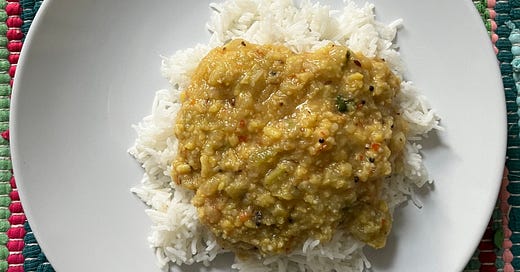Hey there! My name is Apoorva Sripathi, I’m a writer, editor, and artist. This week’s paid subscriber newsletter is a recipe for chayote kootu, a stew-like dish that works with any gourd. I hope you’ll give it a go! If you’d like to support my work, please consider a paid subscription. Thank you so much!
I have never rejoiced so much over a vegetable (I’m lying – I give out a whoop when I see taro) until I spotted chayote squash at the local Chinese grocer – which also stocked sharp chillies, really young ginger, a very matte-looking stack of bitter melons – but noticing the chayote (or chow chow as we call it) was such a thrill. And then I started noticing chayote almost everywhere. The possibility? Making kootu.
I’ve wanted to write about kootu and its preparation for the longest time but I had the impression that no one would be enthralled by it as much as I am. But I remind myself regularly that this is my newsletter; my space. I can write into “an answerless void” if I want to – and on so many days it does feel like that. Not today. I hope that the odds for this piece disappearing into the void are low even as the numbers on this platform don’t seem real anymore, as Kate Wagner noted in the above linked essay.
So, armed with motivations from my beloved writer chats, I’m here to spread the gospel of kootu, a delicately spiced vegan dish where boiled vegetables are enriched by a rough hewn paste of coconut, cumin, and chilli. You can opt for a coriander-coconut-lentil-chilli paste. Or you can add fried gram to it. Some people add sambar powder. My mother does a kootu with cabbage, carrot, and peas. I sometimes add together spinach and onion. The operative word here is ‘add’, simply because that’s what kootu means in Tamil: add or addition. So you can add just about anything you want (maybe not okra perhaps, I find it much better fried) and subtract all the other noise. Sometimes maths enables the most delicious of meals.
Keep reading with a 7-day free trial
Subscribe to shelf offering to keep reading this post and get 7 days of free access to the full post archives.





